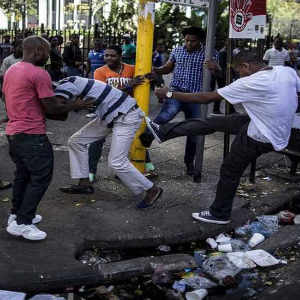By CLA Director Jennifer Ashton*
Immigration Minister Peter Dutton has rightly brought our attention to persecuted minorities in South Africa…but he has overlooked people who fit his stated criteria perfectly.
They demonstrate a work ethic and entrepreneurial spirit that would fit well with values of Australians and who have been the victims of nationwide violence against them in 2008, 2015 and 2017. Rioters attacking this group chant a revolutionary Jacob Zuma song, in this case “hand me my machine (gun)”.
Unlike white farmers who are citizens of South Africa, protected by the legal framework and also eligible to apply through normal migration channels, this group of roughly the same size, namely 30,000, are all refugees/asylum seekers.
South Africa, post-apartheid, has been very generous to fellow Africans who are fleeing persecution, warfare, civil unrest or are just plain hungry and looking for work in the wealthiest country in the region. After all, in their times of trouble, other African countries took South Africans in. However, they have not had the government mechanisms to cope with the arrival of an unknown number of arrivals, legal and unregistered. There are about 300,000 registered asylum seekers/refugees, and somewhere around two million undocumented migrants in total.

South Africa, post-apartheid, is still racked with inequalities, despite efforts to redress the extreme poverty of segments of the population. This inequity sometimes boils over into anger, including the xenophobic riots of 2008 and 2015, where anger was directed against foreigners who were supposedly taking jobs. Vigilante groups accused foreign migrants of local crime, prostitution and drug trafficking.
The 2008 wave of attacks left at least 60 people dead, tens of thousands displaced, 342 immigrant-owned shops looted and 213 burned down. The violence and hate was captured with the image of a Mozambican man, a legal migrant and devout church-goer, burned alive.
The shame was quickly forgotten and again in 2015, Zulu King Goodwill Zwelithini’s comments that foreigners should pack their bags and leave, sparked violence that ended once South Africa deployed its army. At least five people were killed and nearly 2000 migrants forced into refugee camps, again.
Tensions flared again in 2017, with 14 Somalis killed in the first month of the year in Cape Province alone
Prime targets of xenophobia are the shopkeepers in black townships/informal settlements, where they are visible symbols of (relative) wealth. Somalis are noted for their small business skills and have rapidly established trading networks. The 30,000 registered Somalis are unable to return to their country at this stage, due to ongoing security issues.
South Africa has a legal refugee framework and this should not be undermined, but cannot effect adequate protection to such large numbers of foreigners.
Surely a group such as the Somalis should also be considered by Minister Dutton who claims: “(I am) completely blind to somebody’s skin colour – it makes no difference to me”.
*Jennifer Ashton, who is a CLA Director, was the UNHCR Resettlement Coordinator during the 2008 xenophobia riots and their aftermath.

